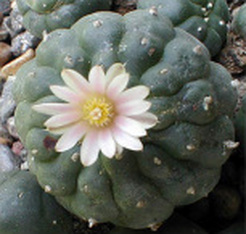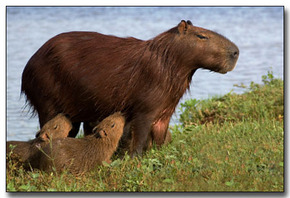How vegetation and animals have adapted in these two climates.

This is the African Peyote Cactus. It is found in the Sahara Desert. As we know, the Sahara is very hot and the soil is not exactly suitable for plant growth. This plant has very thick stems which helps them to hold water for a long time, which is very important in these drought prone climates. Their leaves are reduced to spines, to help them prevent water loss from the stomata due to evaporation. When their is no rainfall for periods of time in the desert, these properties help it to survive.

This is The Capybara. The capybara is the biggest rodent on earth. It is a semi-aquatic herbivore. They are a very common sight along the banks of the Amazon river and its tributaries.
The capybara is prized meat for Amazon natives, as well as other inhabitants of the Amazon jungle, such as jaguars, caimans, anacondas and ocelots.
The capybara's diet consists of different types of grass and aquatic vegetation, grain, melons and squashes. It can swim and dive with ease, and can stay under water for up to five minutes.
With any signs of danger, it is able to sink like a submarine, and hide in murky waters with only it's nostrils sticking out.
The capybara is prized meat for Amazon natives, as well as other inhabitants of the Amazon jungle, such as jaguars, caimans, anacondas and ocelots.
The capybara's diet consists of different types of grass and aquatic vegetation, grain, melons and squashes. It can swim and dive with ease, and can stay under water for up to five minutes.
With any signs of danger, it is able to sink like a submarine, and hide in murky waters with only it's nostrils sticking out.
